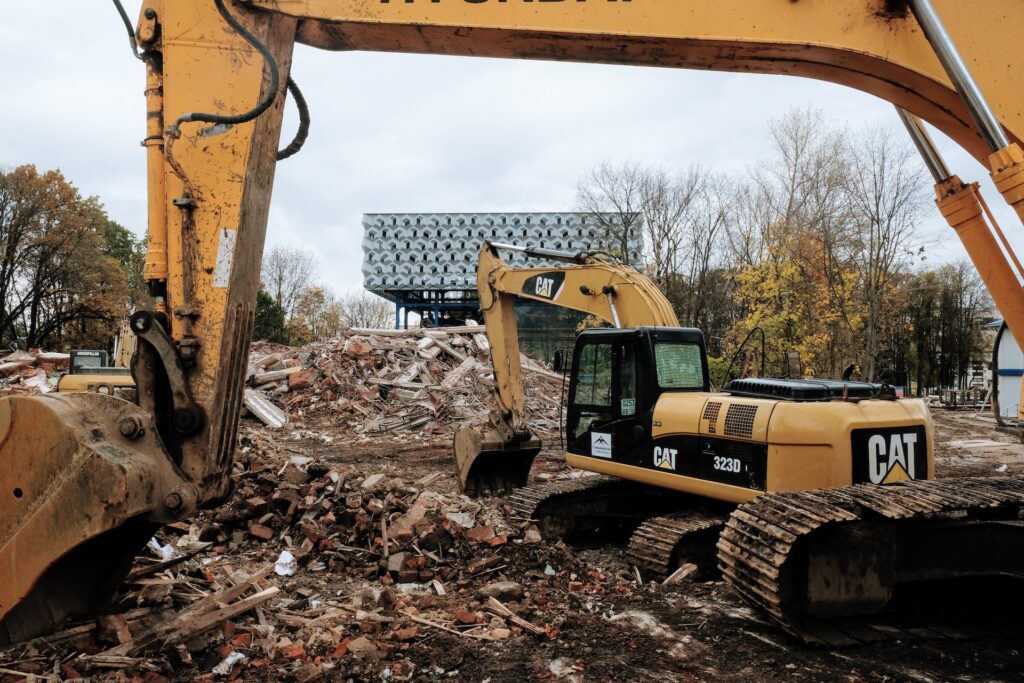
Demolition projects often generate a substantial amount of waste, contributing to environmental concerns and landfill overload. However, with a strategic approach, it’s possible to turn demolition into an opportunity for sustainable practices. This comprehensive guide explores effective ways to reduce, reuse, and recycle during demolition, emphasizing the importance of responsible construction waste management.
Comprehensive Demolition Planning
- Detailed Site Assessment: Before initiating a demolition project, conduct a thorough site assessment. Identify salvageable materials, hazardous substances, and potential recycling opportunities. This information will guide your demolition plan and waste management strategy.
- Selective Demolition Techniques: Opt for selective demolition rather than total destruction. This approach involves carefully dismantling structures to salvage valuable materials. Selective demolition reduces waste generation and allows for the recovery of materials like wood, metal, and concrete.
Reuse – Giving Materials a Second Life:
- Salvaging Structural Elements: Salvage reusable structural elements such as beams, columns, and bricks for potential use in future construction projects. These materials can often be repurposed or incorporated into new buildings, reducing the need for virgin resources.
- Rescuing Interior Finishes: Salvage interior finishes like doors, windows, flooring, and decorative elements. These items can be refurbished and reused, adding character to new constructions or serving as valuable components in renovation projects.
- Collecting Appliances and Fixtures: Retrieve appliances and fixtures that are still in working condition. Items like sinks, toilets, and lighting fixtures can be donated to local charities, Habitat for Humanity, or reused in other building projects.
- Wood Reclamation: Reclaim and repurpose wood from demolished structures. Whether transformed into furniture, flooring, or decorative elements, salvaged wood adds a rustic and eco-friendly touch to various projects.
Reduce – Minimizing Construction Waste:
- Deconstruction Instead of Demolition: Consider deconstruction as an alternative to traditional demolition. Deconstruction involves carefully dismantling a structure to salvage as many materials as possible. While it may take more time, it significantly reduces waste and benefits the environment.
- Smart Demolition Techniques: Employ precision demolition techniques to minimize the generation of construction debris. By carefully dismantling structures and using controlled demolition methods, you can preserve materials for reuse and decrease the overall volume of waste.
- On-Site Material Sorting: Implement on-site material sorting to separate recyclables from non-recyclables. This practice streamlines the recycling process and ensures that materials are properly diverted from landfills.
- Minimizing Contamination: Take measures to minimize contamination of materials. Hazardous substances, such as lead-based paint or asbestos, should be handled and disposed of following environmental regulations to prevent pollution and harm to human health.
Recycle – Transforming Waste into Resources:
- Concrete Recycling: Crushed concrete from demolished structures can be repurposed as aggregate for new construction projects. This practice conserves natural resources and significantly reduces the environmental impact of extracting and transporting fresh aggregate.
- Metal Recycling: Salvage metal components, such as steel beams and reinforcement bars, for recycling. Metal recycling not only conserves energy but also reduces the need for mining and processing new metal ores.
- Asphalt Recycling: If asphalt surfaces are part of the demolition waste, consider asphalt recycling. Reclaimed asphalt can be used to pave new roads or repair existing ones, contributing to sustainable infrastructure development.
- Wood Recycling: Wood waste from demolition projects can be recycled into wood chips, mulch, or even biofuel. Establish partnerships with local recycling facilities to ensure that wood materials are diverted from landfills.
Community Engagement and Donations:
- Donation of Building Materials: Establish connections with local nonprofit organizations, schools, or community centers to donate salvaged materials. Items like furniture, appliances, and fixtures can benefit those in need and reduce the environmental impact of disposal.
- Educational Programs: Engage with local educational institutions to create programs that teach students about responsible construction practices. This could include partnerships for hands-on learning experiences or internships focused on sustainable demolition techniques.
- Community Resource Centers: Establish community resource centers where residents can access salvaged building materials at reduced costs. This initiative not only benefits the community but also promotes the reuse of materials that might otherwise end up in landfills.
Technology and Innovation:
- Building Information Modeling (BIM): Utilize Building Information Modeling (BIM) to create accurate digital representations of structures before demolition. This technology enables precise planning, reducing the likelihood of unexpected complications and waste generation.
- Advanced Sorting Technologies: Implement advanced sorting technologies to automate the separation of recyclable materials from construction debris. These technologies enhance efficiency, reduce manual labor, and increase the overall effectiveness of recycling efforts.
A Sustainable Demolition Legacy
In conclusion, demolition projects present an opportunity to shift from a linear to a circular approach in the construction industry. By emphasizing reuse, reduce, and recycle strategies, we can transform demolition waste into valuable resources, contributing to a more sustainable and eco-friendly future. With careful planning, selective techniques, and community engagement, each demolition project has the potential to leave a positive legacy—reducing environmental impact, conserving resources, and fostering a culture of responsible construction waste management.
